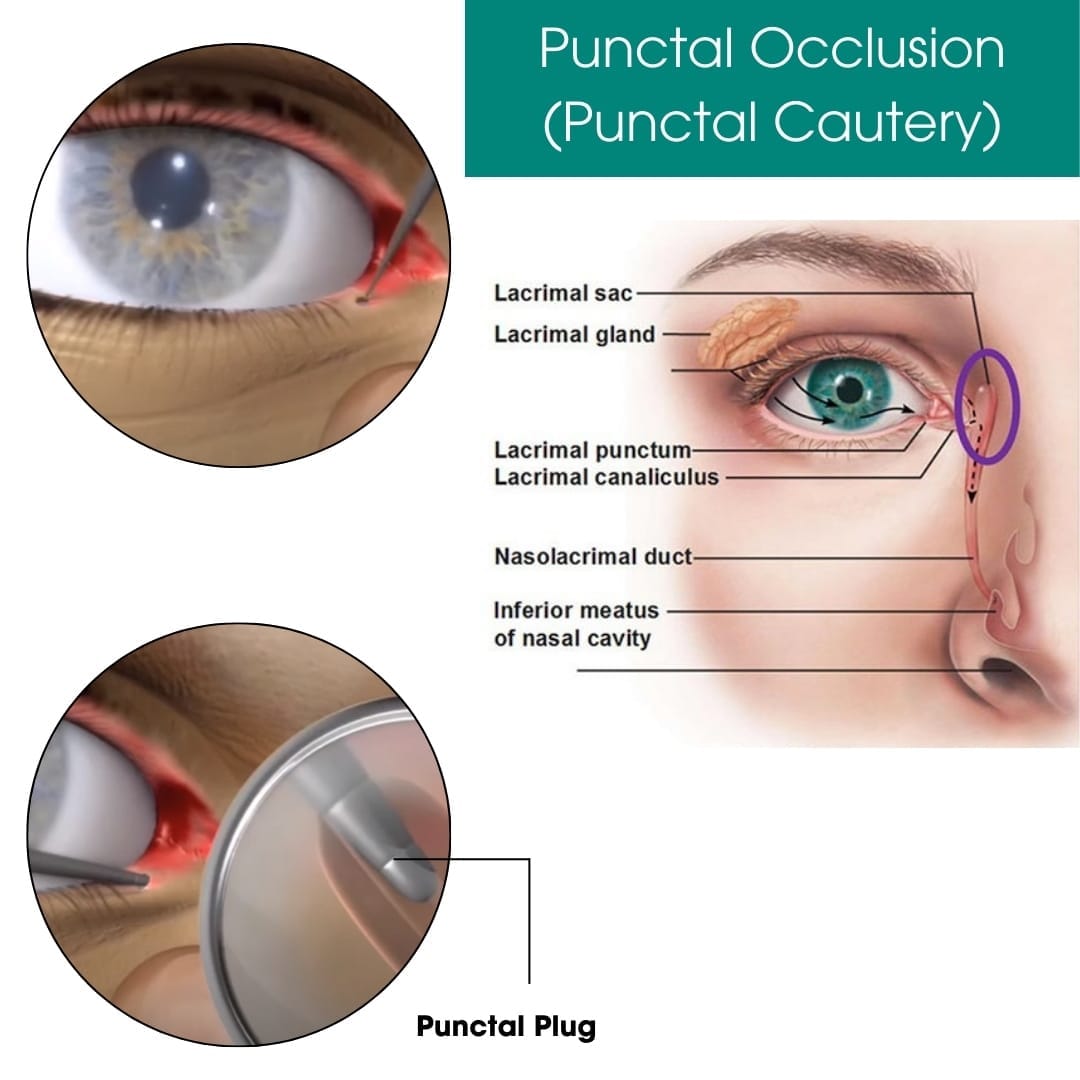Punctal occlusion is a procedure that your eye doctor may recommend if symptoms of dry eye aren’t relieved by eyedrops or prescription nasal sprays. It’s done by placing plugs for dry eyes in tear ducts to block drainage. Dry eye syndrome is a condition that affects many people. If you have this condition, your eyes may not make enough tears or the tears that your eye make evaporate too rapidly. In addition to dry eyes, this condition is characterized by itchy, burning or gritty eyes and is usually treated with artificial tears or prescription eyedrops.
It’s imperative that you find a skilled and experienced optometrist for any type of procedure involving the eyes. For an eye plug procedure, cautery surgery or lazy eye surgery in the Manhattan area, or for a routine eye exam or emergency eye care, rely on the expert eye doctors at Eye Physicians.

Your NYC ophthalmologist may recommend prescription eyedrops or eye ointments to relieve symptoms of dry eye syndrome, but if this approach doesn’t provide relief, a dry eye plug procedure can be done to help eyes make better use of the lubricating tears they produce.
The tears produced by your eyes do more than express your emotions; they keep the surface of the eyes moist. If the eyes don’t stay moist, the surface of the eye feels uncomfortable. Your eyes may become inflamed or the surface of the eye may be damaged, and vision severely affected.
Dry eye may be triggered or worsened by medical conditions such as:
The aging process is a factor in dry eye syndrome since tear production slows as you age. Certain medications such as beta blockers, antihistamines and some antidepressants sometimes cause eye dryness.
Plugs for dry eyes are also called occluders, punctum plugs or lacrimal plugs. Punctal plugs are designed to conserve tears by closing the tiny opening in the inner corner of the upper and lower eyelids, which is called a punctum, and serves to drain tears from the eye.
Different types of tear duct plugs for block tear drainage include:
A temporary tear duct plug may be used to find out if this type of treatment is effective for your dry eye. If it provides an effective solution, temporary punctal plugs can be replaced with permanent or semi-permanent plugs. Punctal plugs can also make other forms of treatments such as eyedrops more effective.
A punctal cautery procedure is a less common procedure that may be recommended for severe dry eye if eyedrops and punctal occlusion are both unsuccessful in relieving symptoms. Cautery surgery involves using electrocautery to surgically close the punctum. This permanently closes tear ducts to prevent tears from leaving the eye too quickly.
Punctal occlusion is an outpatient procedure that’s quick and painless.
Things to expect from a procedure for punctal plugs include:
A punctal occlusion procedure is done in just a few minutes. There’s no recovery time needed and many people experience immediate relief of dry eye symptoms. You shouldn’t feel a punctal plug once it’s in place. You can drive yourself home and immediately resume normal activities.
Cautery surgery is also a painless outpatient procedure. The area around the eye is numbed using a local anesthetic. A handheld device that resembles a pen is used and an electric current heats the tip. The tip of the cautery device is inserted into the punctum and short pulses of cautery are applied. The procedure permanently closes the tear duct and is completed in just a few minutes.
Your New York City ophthalmologist provides detailed instructions about what to expect after punctal occlusion or punctal cautery.
General guidelines for taking care of your eyes after eye surgery include:
Complications and side effects of punctal plugs are uncommon, and it’s rare to feel any discomfort after punctal plug surgery. If you feel uncomfortable for any reason, the punctal plugs can be removed by your eye doctor. Let your Manhattan ophthalmologist know if you have any symptoms that concern you.
Dry eye syndrome isn’t just uncomfortable.
If you have severe dry eye that’s untreated, it may lead to problems such as:
The tears your eyes produce protect the surface of your eyes. Punctal plugs can make a big difference in how your eyes feel and how well you see. Don’t ignore symptoms such as eye redness, blurred vision, sensitivity to light or difficulty wearing your contact lenses. The eyecare team at Eye Physicians is committed to providing top notch comprehensive eye care for the whole family. Contact them for an appointment today.
Eye Physicians
110 Lafayette St, Suite 503
New York, NY 10013
(212) 292-4814
Entrust the care of your precious eyesight to highly skilled and experienced eye care professionals. For top-notch ophthalmologists and optometrists in Downtown Manhattan, choose Eye Physicians. Eye Physicians ensures prompt care, precise diagnosis, and personalized treatment plans.
Schedule an Appointment